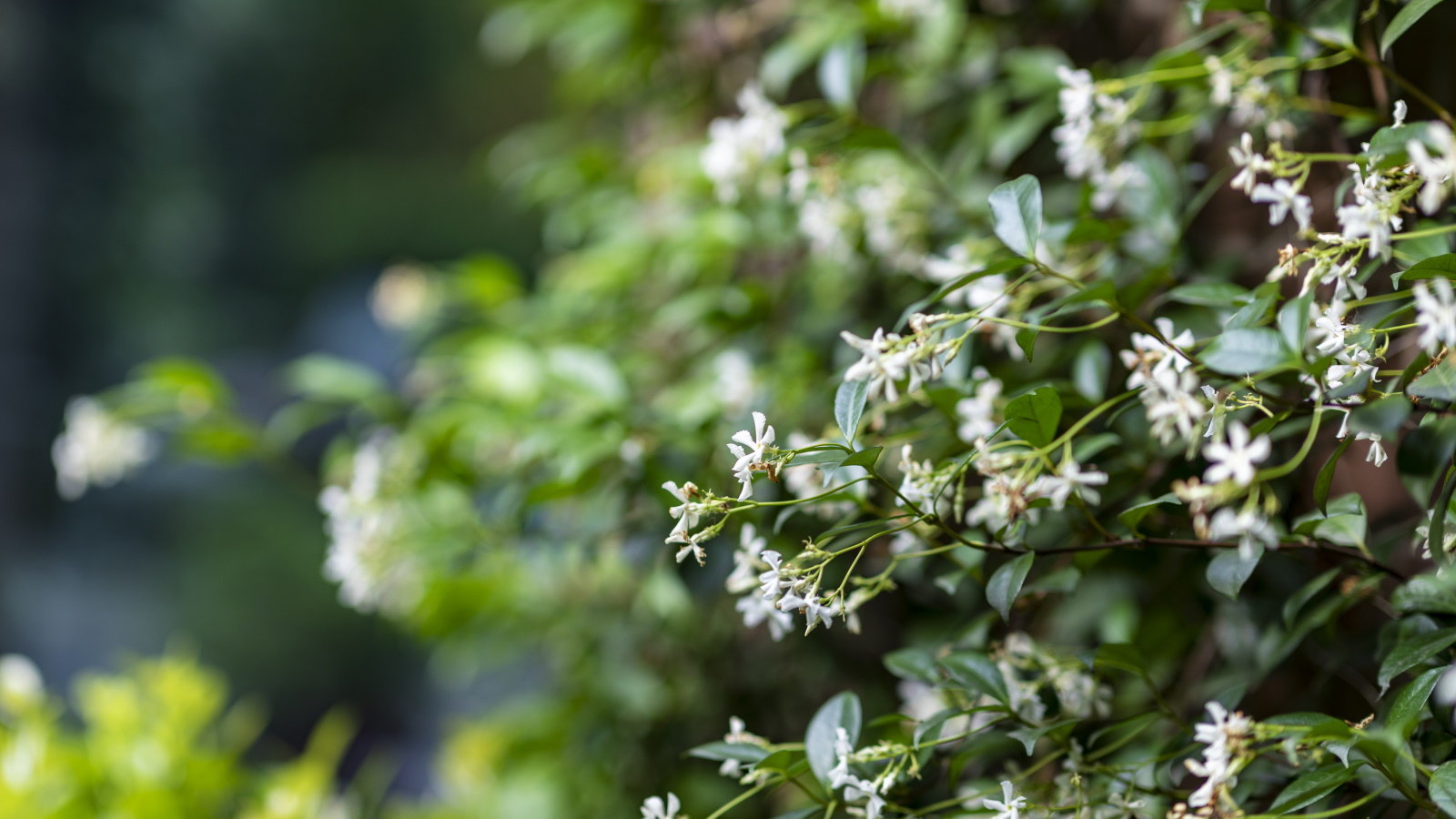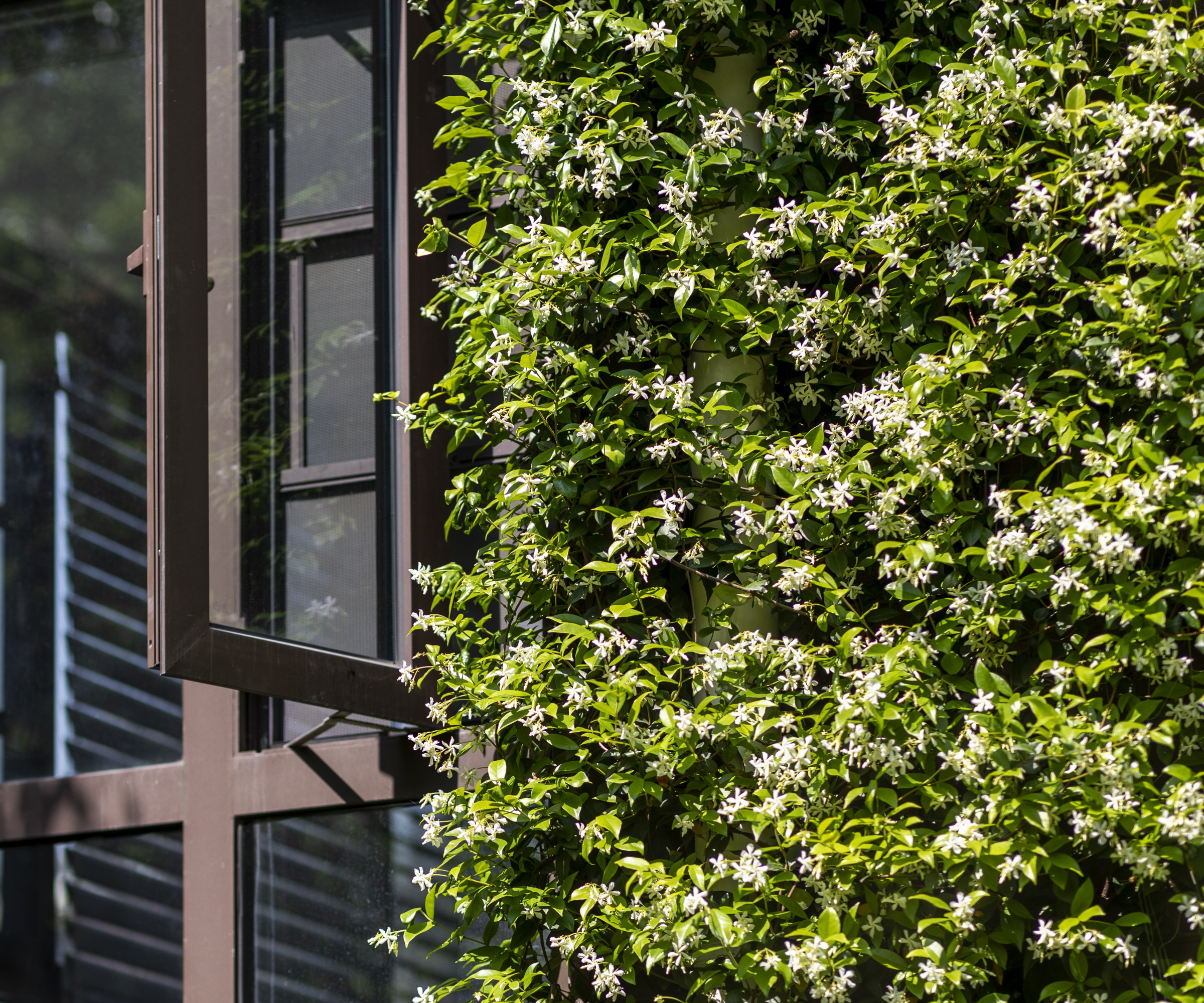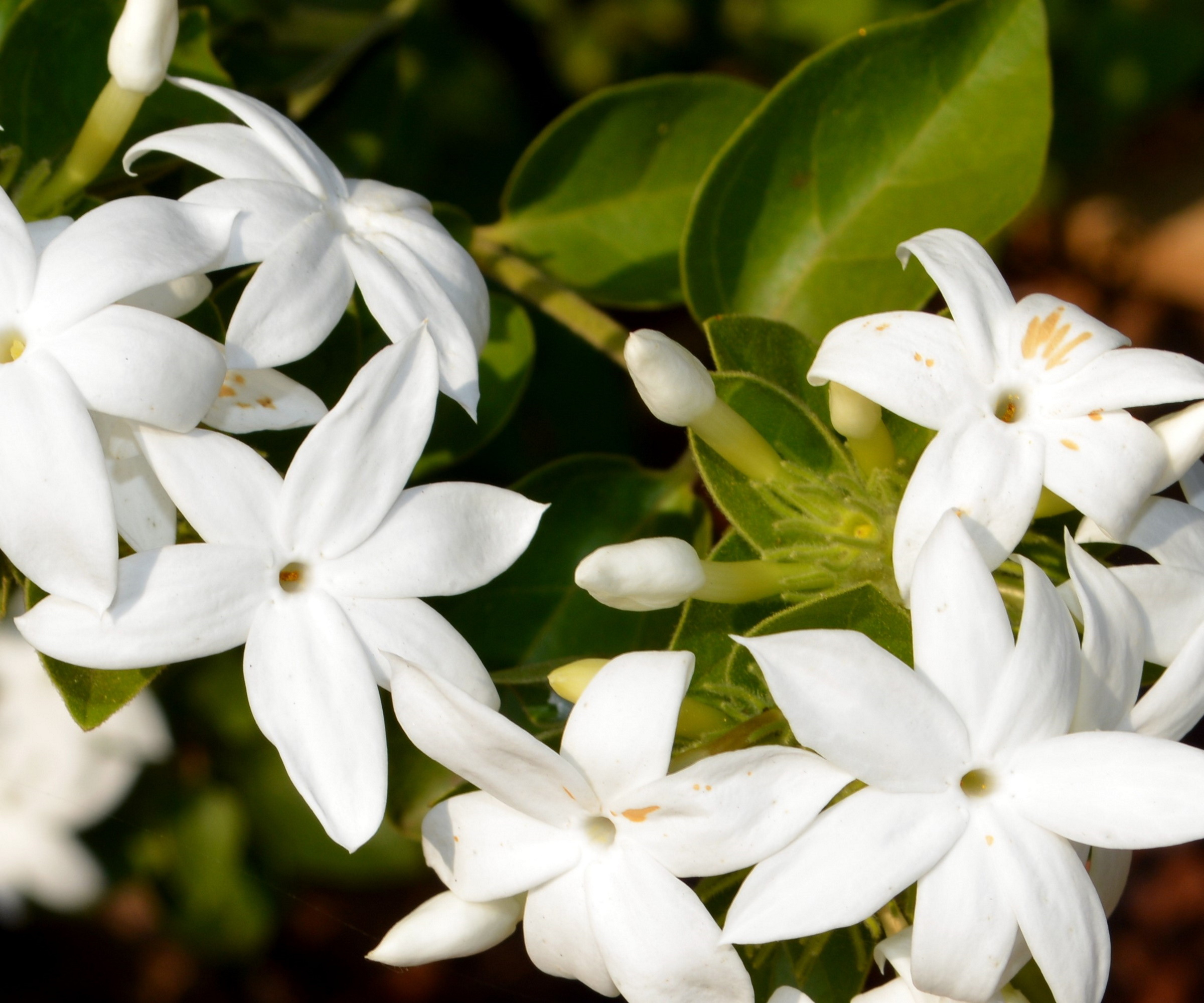
Star jasmine, or Trachelospermum jasminoides, is a versatile and popular climbing plant valued for its fragrant white flowers and lush foliage. Native to China and Japan, this evergreen climber thrives in a variety of climates and settings, making it a top pick for gardeners worldwide.
Training star jasmine to climb over a wall or perhaps a garden structure, such as a trellis, pergola or fence is relatively straightforward, and with regular tying in and support, the plant will quickly grow and establish itself.
White star-like flowers emerge in spring, with a honeyed fragrance that will fill your backyard with the sweetest scent. No wonder this climber is the go-to selection for those landscaping their yard or considering planting ideas for their garden and has been a favorite of mine for many years.
Star jasmine is not to be confused with summer jasmine, or Jasminum officinale. Whilst they may look similar, star jasmine is not actually in the jasmine plant family, it has simply been given this name because of aesthetic similarities.
This flowering climber is vigorous, however, and pruning is essential to keep star jasmine looking tidy and healthy. Without pruning, unruly shoots will begin to crowd out other plants and climb where they are not supposed to.
All it takes is a little attention and the occasional spot of maintenance, and your star jasmine will grow well, and importantly, where you want it to grow.

How to prune star jasmine
Pruning is essential to keep your star jasmine climber looking neat and tidy. With a small bit of attention, you will ensure that your flowering climber remains healthy and well maintained.
When to prune star jasmine

Pruning star jasmine isn’t a difficult task. Your climber will regrow quickly, so there is no need to worry too much about precision. Knowing when to prune, however, is important, as cutting back at the wrong time will reduce flowering and can cause damage to your climbing plant.
Star jasmine, as an evergreen vine, does not lose its leaves during winter and grows well through US hardiness zones 8 - 10. This 'easy to grow climber is a staple in the southern states,' says Jen McDonald, garden expert and a co-founder of Garden Girls.
Whilst its growth slows down during the colder months of the year, it will keep your yard looking lush and verdant. 'It can tolerate cold snaps to 10 degrees Fahrenheit,' Jen says.
As many gardeners will know, many deciduous climbers, such as climbing roses, can be pruned while dormant, but as star jasmine is not deciduous, and so a slightly different approach is needed.
Whilst different experts suggest different timings regarding the best time for pruning star jasmine, in my experience, this is best done after the main flowering period in late spring or early summer. Doing so at this time is recommended as you do not
interfere or disturb the climber during the flowering period. And after all, who wouldn't want to make the most of the starry-white, scented blooms?
Following this heavy pruning, completed after flowering, which will involve a reduction in size and shaping the climber as required, I would suggest only an occasional, light pruning as and when necessary throughout the year.
'Once established, star jasmine requires minimal care,' Jen says, and an occasional butchering to the base is tolerated.' Whilst any butchering of plants is not recommended, the sentiment remains true. This hardy and vigorous climber is tough, and you should not be scared to get those pruning shears out... just make sure it is at the right time of year: after flowering has come to an end in late spring or early summer.
Star jasmine, or Trachelospermum jasminoides, is a breathtaking climber that will leave your visitors in awe with both its lavish aesthetic qualities and its intense yet sweet fragrance.
How to prune star jasmine

Star jasmine is 'known for its moderate to fast growth rate, averaging about 12 to 24 inches per year,' says Mike Murphy, plant expert and owner of You Had Me At Gardening.
If your star jasmine is a little unkept and overgrown, be brave, cutting back some vines by as much as one-third or even one-half can be necessary. Using sharp and clean secateurs, such as these pruning shears from Walmart, carefully prune your climber, making cuts above a shoot or bud. 'Regular trimming helps maintain a tidy appearance and encourages lateral growth,' Mike says.
When pruning large shrubs or climbing plants, I always find it helps to stand back and inspect your work. Doing so will help to guide your next move. Once you are satisfied with the shape, you can further train and guide your climber by tying the plant in the direction you want it to grow, using twine such as this Garden Twine from Walmart.
As Mike says, careful pruning can then promote lateral growth, ensuring that your climber remains bushy and healthy, and importantly, full of scented blooms. 'Avoid tying too tightly to allow for natural movement and prevent damage to the stems,' Mike says.
Following this, occasional trimming through the growing season might be necessary. I have grown star jasmine over the garden gate for several years, and dodging and diving out of the way of vines that hang low is not ideal. A small amount of trimming through the summer is just fine. Just remember that the annual heavy prune is best done in late spring or early summer after flowering has ended.
Pruning shears with ergonomic handle and sharp steel for effective pruning. Measuring 8inches, these secateurs will easily cut through garden perennials, shrubs and climbers.
FAQs
Can I lift and replant star jasmine?
Whilst you can transplant star jasmine, this can be difficult depending on the size of your climbing plant. The ideal time to do this is late spring, allowing it to establish roots before any warm summer weather. Using a garden fork, gently loosen roots and soil at the base of your climber, slowly teasing your plant out of the soil. It is recommended to cut back your climber to only a few feet in height so that the plant can focus on root growth in the first year following replanting.
Star jasmine, as an evergreen climber, will eventually cover walls and garden structures with its attractive verdant foliage and sweetly scented flowers. Why not consider also planting winter jasmine, for a pop of yellow color that will help to add impact during the winter months?







